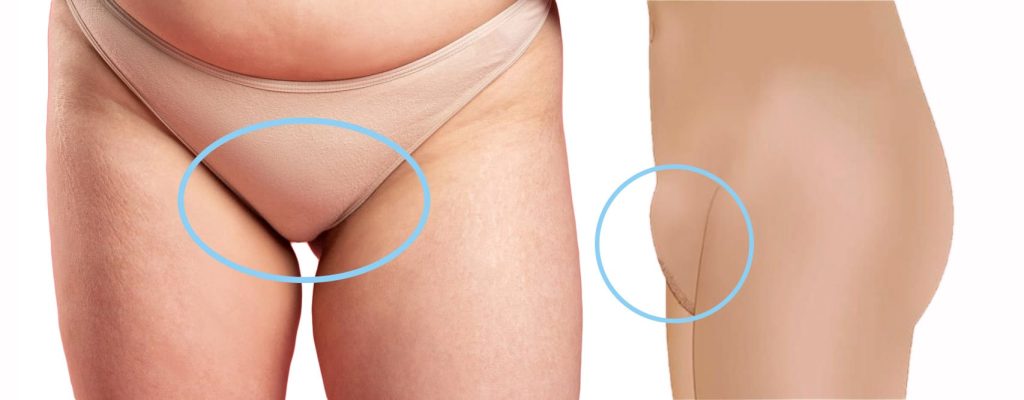Key Takeaways
-
Mons pubis liposuction is a viable option for individuals looking to reduce fat and contour the area above the pubic bone, enhancing both appearance and comfort.
-
Assessing your suitability for the procedure involves consulting with a qualified plastic surgeon to discuss your health, goals, and potential outcomes.
-
Preparing for surgery is crucial; follow your surgeon’s advice on diet, medication adjustments, and pre-operative care to ensure the best results.
-
Understanding the procedure and recovery insights helps set realistic expectations. Recovery time varies, but following post-op care instructions is key to a smooth healing process.
-
Being aware of the risks, including infection, asymmetry, or dissatisfaction with results, is important. Discuss these thoroughly with your surgeon beforehand.
-
Results longevity can be maintained with a stable weight and healthy lifestyle. However, natural aging and weight fluctuations can affect outcomes over time.
Understanding Mons Pubis Liposuction
Procedure Details
Mons pubis liposuction is a cosmetic surgery aimed at reshaping and reducing the size of the mons pubis area. This area, located above the pubic bone, can accumulate fat, leading to discomfort and self-consciousness. The liposuction procedure involves removing excess fat, sometimes in conjunction with a pubic lift, to enhance the area’s appearance.
Surgeons use specialized techniques to ensure minimal scarring and quick recovery. They focus on contouring the area for a natural look.
Realistic Expectations
Setting realistic expectations is crucial for anyone considering this surgery. While it significantly improves physical appearance, it’s not a substitute for weight loss. Patients often report increased confidence and comfort in tight clothing post-procedure.
Understanding the limitations helps set achievable goals. Surgeons discuss these during consultations.
Popularity Reasons
The popularity of mons pubis liposuction has surged recently. Many opt for this procedure to address issues that diet and exercise can’t fix. It’s not just about aesthetics; it’s about feeling comfortable in one’s skin.
Reasons vary from personal discomfort to seeking an improved silhouette in clothing. The desire for a youthful appearance also drives many decisions.
Assessing Suitability for the Procedure
General Health
The journey to mon pubis liposuction begins with evaluating a candidate’s overall health. It is crucial that individuals are in good physical condition, without major health issues that could complicate surgery or recovery. This evaluation helps ensure the safety and effectiveness of the procedure.
Doctors will look for signs of stable weight, as fluctuations can affect the outcomes. They also assess skin elasticity, which plays a significant role in how well the area adjusts post-surgery.
Medical History
Disclosing one’s complete medical history is non-negotiable. This includes any previous surgeries, especially around the target area, and all current medications. Such transparency allows surgeons to identify potential risks and tailor their approach accordingly.
It’s important for patients to be honest about their lifestyle habits too, like smoking or drinking, as these can impact healing times and surgery success.
Preliminary Examination
The preliminary examination is where doctors get a closer look at the specific concerns of the mons pubis area. They evaluate fat distribution, skin quality, and identify any underlying conditions that might affect the procedure.
This step is essential for customizing the surgical plan to fit each patient’s unique needs. It also provides an opportunity to discuss expected outcomes and address any questions or concerns.
Preparing for Surgery
Medication Adjustments
Patients must adjust their medication intake prior to surgery. Surgeons often advise stopping certain medications and supplements that can increase bleeding risk. This includes aspirin, ibuprofen, and certain vitamins.
They also recommend starting or adjusting other medications under the guidance of a healthcare professional. It’s crucial for patients to share their full medical history with their surgeon.
Post-Surgery Plans
Arranging for post-surgery care is essential. Patients should plan for someone to drive them home after the procedure, as it’s typically done on an outpatient basis. They must also prepare a comfortable recovery area at home.
Having assistance for daily tasks in the first few days after surgery can greatly aid in recovery. Surgeons will provide detailed care instructions, including the use of a compression garment to reduce swelling and support healing.
Surgical Markings
Before the procedure, surgeons make precise markings on the patient’s body. These markings guide incisions and fat removal areas, ensuring accuracy and achieving the desired outcome. It’s a critical step for both patient and surgeon to discuss expectations and outcomes.
Pre-Operative Photos
Taking pre-operative photographs is a standard practice. These photos serve as a medical record and help in comparing before-and-after results. They are vital for assessing the effectiveness of the liposuction and any additional procedures like a tummy tuck to remove loose skin following significant weight loss.
Procedure and Recovery Insights
Surgical Steps
The surgical process begins with choosing the right anesthesia. Options typically include local anesthesia with sedation or general anesthesia, depending on the patient’s comfort and health status. Next, precise incisions are made in the targeted pubic region. The method of tissue removal varies but often involves liposuction to extract excess fat. Surgeons may use different techniques based on the patient’s goals and the specific characteristics of the area.

Patients should expect the procedure to last one to two hours as an outpatient service. However, in many cases where extensive correction is needed, an overnight stay at the hospital might be necessary for close monitoring.
Recovery Journey
Recovery plays a critical role in achieving desired results. Patients must adhere to post-operative care instructions, which include wearing compression garments, avoiding strenuous activities, and attending follow-up appointments for optimal healing.
Swelling and discomfort are common in the first few weeks but gradually subside. Most individuals can return to work within a week, provided their job doesn’t involve heavy lifting or vigorous physical activity.
Risks and Results Longevity
Common Risks
Every surgical procedure carries some level of risk, and mons pubis liposuction is no exception. Patients may experience bruising, swelling, or discomfort in the treated area. More serious complications can include infection, uneven skin contours, or changes in skin sensation. The likelihood of these risks can be significantly reduced by selecting a qualified surgeon with extensive experience in body contouring procedures.
Choosing a highly skilled surgeon not only minimizes complications but also ensures that the results align with patient expectations. They can provide guidance on how to care for the surgical site properly, further reducing the risk of adverse outcomes.
Results Longevity
The longevity of mons pubis liposuction results largely depends on factors like weight fluctuations and aging. Ideally, the outcome of this cosmetic surgery is long-lasting, provided patients maintain a stable weight and adhere to a healthy lifestyle. Significant weight gain after the procedure can alter the appearance of the surgical area, potentially diminishing the aesthetic results.
Aging processes also play a role in changing body contours over time. However, the fat cells removed during liposuction do not regenerate, making it possible to enjoy the benefits for years to come. Patients are encouraged to engage in regular exercise and follow a balanced diet to preserve their newly contoured physique.
Final Remarks
Mons pubis liposuction offers a transformative solution for those of you looking to refine your silhouette and boost confidence. Understanding the procedure, assessing your suitability, and preparing adequately are key steps toward achieving the desired outcome. The journey from consultation through recovery is marked by expert care, but it’s crucial to weigh the risks against the potential for long-lasting results. Your decision to pursue this path reflects a commitment to personal aesthetics and well-being.
Now’s the time to take action. If mons pubis liposuction feels right for you, reaching out to a qualified surgeon is your next step. Ensure they’re certified and experienced in body contouring procedures. By choosing a professional who prioritizes safety and satisfaction, you’re stepping closer to the body confidence you deserve. Don’t wait; start your transformation journey today.
Frequently Asked Questions
What is Mons Pubis Liposuction?
Mons pubis liposuction is a cosmetic procedure aimed at reducing fat in the mons pubis area, enhancing the contour and appearance of the pubic region.
Who is an Ideal Candidate for Mons Pubis Liposuction?
Ideal candidates are those in good health, with realistic expectations, struggling with excess fat in the mons pubis area that doesn’t respond to diet and exercise.
How Should I Prepare for Mons Pubis Liposuction Surgery?
Preparation involves following your surgeon’s advice, which may include quitting smoking, avoiding certain medications, and arranging for recovery time post-surgery.
What Can I Expect During and After the Procedure?
The procedure involves removing excess fat through suction. Recovery may include some swelling and discomfort, but most patients resume normal activities within a week.
What Are the Risks Associated with Mons Pubis Liposuction?
Like all surgeries, risks include infection, bleeding, and uneven contouring. Choosing a skilled surgeon minimizes these risks.
How Long Will the Results Last After Mons Pubis Liposuction?
Results can be long-lasting if you maintain a stable weight; however, significant weight gain or loss can affect outcomes.



